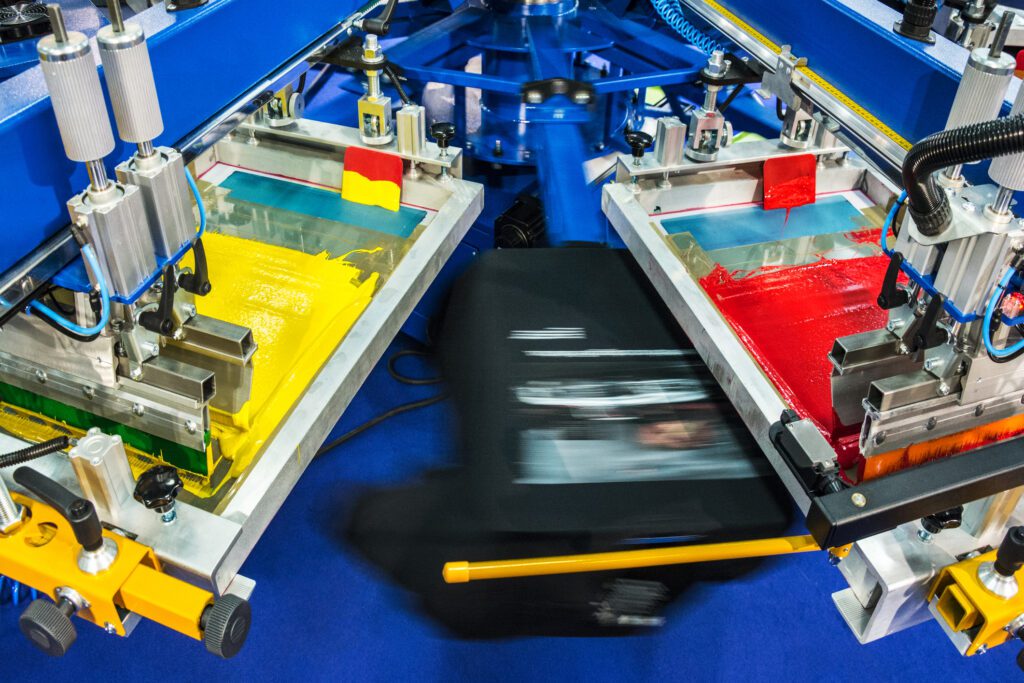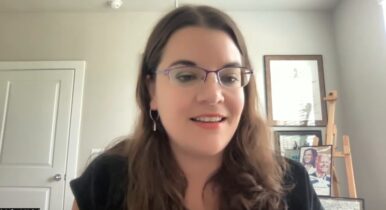An Inflationary Environment for Campaign Merch

In some ways, Audra Grassia has become a thought leader on T-shirts, or at least how they’re designed and sold by candidates.
As a co-founder of Goodstock & Co. — a Higher Ground Labs-backed platform company that provides fundraising merchandise to campaigns — she’s been one of the left’s most high-profile proponents for reevaluating how campaigns and groups use promotional products to connect with donors.
Maybe it’s the trainer in her. She came through EMILY’s List’s Campaign Corps early in her career and now serves as a member of the group’s Trainers Bureau in addition to serving as an advisor to Blue Leadership Collaborative.
C&E: We’re in an inflationary environment, how are your clients reacting to that?
Grassia: We’re seeing huge increases in the need for on-demand merchandise for that exact reason. People don’t want to pay a bunch of money to hold inventory. And it’s also wasteful to create a bunch of inventory that may or may not get sold. So that’s a bit of a symptom of people being tighter with their dollars a little bit.
But I also think that people are realizing it’s just harder and harder to get that initial $20 [donation] in the door. So while somebody might not be willing to pay that just for nothing, they might be willing to donate it for a sticker in return or for a T-shirt in return. And it’s really that initial acquisition of the small-dollar donor where merch has a huge strategic advantage over other small-dollar donor strategies right now.
I think more and more campaigns are starting to see that and realize it. What is a little bit mismatched is that we actually have a lot of lower down ballot candidates and campaigns who want to use merch as part of their strategic vision and fundraising. And while that’s great, the candidates and campaigns who are going to, frankly, benefit the most from it are going to be those bigger campaigns that have more brand awareness, more brand recognition — like the John Fettermans who can sell out a [Let them Eat Crudité] sticker in 24 hours.
But a lot of incumbent senators haven’t used merch in the past, and they’re a little reticent to dive into it now. That said, I do think this is changing.
C&E: Are you having to raise prices and is that squeezing margins on fundraising?
Grassia: We certainly have seen some inflationary pressure, but our model is that we actually have a really wide vendor network, which is one thing that gives [us], in particular, a strategic advantage. So even as prices have risen over the last few years, our expansive vendor network has enabled us to keep our prices really competitive.
We actually haven’t had to raise our prices, and in fact, we’ve dropped some of our fees around fulfillment. We’ve tried to really hold the line on this because we do think we can be strategic and can help campaigns raise money. But if we raise our prices too high, that just won’t be the case.
C&E: So are more campaigns, even with inflation, buying into merch?
Grassia: We are seeing a trend towards more campaigns understanding the strategic value of merch. And from our perspective, we hope that the left is thinking about this more strategically than the right. We’re eager to see how this campaign cycle shakes out. I believe you’ll see more small-dollar donations coming in through merchandise than any cycle ever before.
C&E: In terms of colors and designs for apparel, what are your clients gravitating to these days?
Grassia: People still love the classic logo tee, but people also really like the tagline on a shirt. They want their candidate to be associated with whatever their brand is that is beyond the logo. So, for example, [Senate candidate] Lexi Reese in California is asking her voters, “How is your California?” And so that’s on a bunch of her merchandise and it’s part of her brand. We’re seeing more things like that this year.
C&E: So maybe fewer logos and more slogans?
Grassia: It’s really a combination and it runs the gamut depending on who the candidate is. But yeah, a lot of slogans or taglines. Again, going back to the Reese example, which is just fresh on my mind because I was working on their store recently — she wants to talk to her voters about working, building and thriving together in California. But they’re using creative colors to do it, and they’re able to do that now with everything that is currently available.



